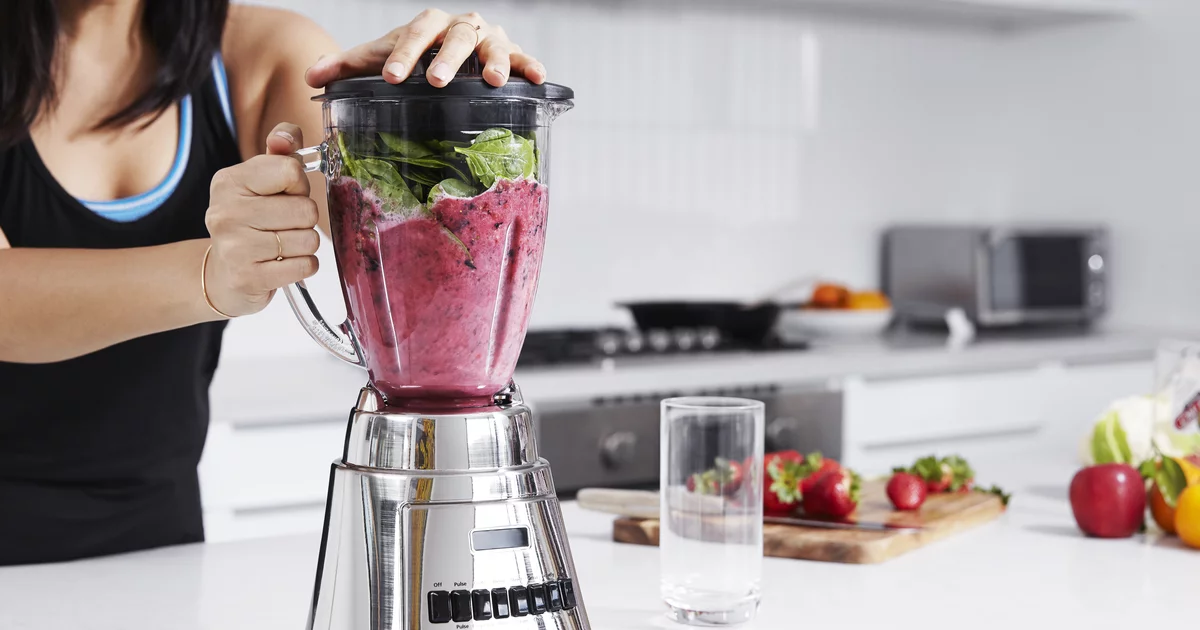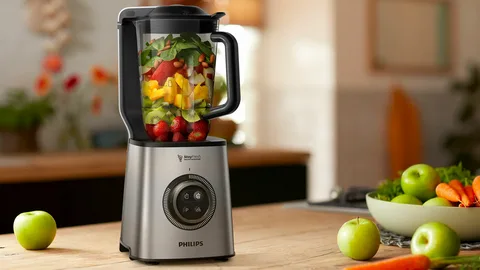In the bustling world of food and beverage services, where efficiency and quality are paramount, having the right tools can make all the difference. Among these, a commercial-blender stands out as an indispensable ally. Whether you’re whirling up smoothies, soups, or sauces, understanding how to choose and use your commercial blender can drastically affect your kitchen’s productivity and the satisfaction of your clients. In this comprehensive guide, we delve into the essentials of commercial-blenders, offering insights and advice to help you blend your way to success.
Understanding the Basics of Commercial-Blenders
Commercial-blenders are crafted to withstand the rigors of professional kitchens and bustling beverage establishments, setting them apart from their household counterparts. These formidable appliances are equipped with potent motors that facilitate the smooth operation of blending vast quantities and the consistent execution of tasks throughout the day. Their construction incorporates materials that are built to last, capable of enduring the continuous wear and tear experienced in a busy culinary environment.
With features designed for a multitude of tasks, commercial-blenders excel in a variety of functions, from pulverizing ice to a fine consistency to creating emulsified concoctions with ease. The adaptability and robustness of these blenders make them an essential component in the arsenal of any establishment striving to meet high standards of quality and efficiency in food and beverage preparation. Their engineering prioritizes not only performance but also durability, ensuring that these machines can sustain repeated use without compromise, thereby supporting the fast-paced demands of the culinary and hospitality industries.
Key Features to look for in a Commercial-blender
When embarking on the journey to procure a commercial-blender, paying attention to several pivotal features will undoubtedly amplify its efficacy and adaptability to your culinary requirements. Initially, the motor’s prowess, quantified either in watts or horsepower, is paramount; it determines the blender’s capability to effortlessly manage and process robust ingredients. An apparatus equipped with variable speed control will afford you unparalleled precision in blending, enabling the creation of textures ranging from coarsely chopped to smoothly puree with ease.
The incorporation of a pulse feature is invaluable, offering the facility for momentary bursts of power to effectively deal with chunky pieces without over-processing the rest of the blend. Furthermore, the resilience and longevity of your commercial-blender are significantly influenced by the materials from which it is constructed. Opt for blenders with blades forged from stainless steel and jugs made of high-grade plastic or glass, materials known for their durability and resistance to wear.
For settings where a quiet ambience is cherished, such as open-plan kitchens or tranquil cafes, models designed with noise-reduction capabilities can be a considerate addition, minimizing disruption. Identifying a blender that harmonizes these features with your specific needs is instrumental in ensuring your establishment’s operations are both smooth and efficient, enabling you to cater to your clientele’s preferences with professionalism and flair.
Maximizing Efficiency with the Right Blender Settings
Unlocking the full potential of your commercial-blender requires a strategic approach to its settings, which can profoundly impact both the quality of your output and the efficiency of your operations. To commence, initiating the blend at a lower speed is advisable, as it facilitates the initial chopping of ingredients, reducing the likelihood of creating a load too challenging for the machine at higher speeds. This approach not only ensures a more uniform texture but also protects the integrity of the blender’s motor.
As the mixture begins to coalesce, gradually escalating the speed encourages a smooth transition to a finer consistency, achieving the desired texture without undue strain on the equipment. The pulse feature, a critical aspect of many commercial-blenders, is an effective tool for managing larger or more resilient pieces. Short, powerful bursts allow for targeted blending, ensuring that these challenging items are integrated without unnecessarily affecting the remainder of the mixture.
This technique is particularly useful in preventing the over processing of the entire batch, a common pitfall when attempting to incorporate difficult ingredients. Understanding and utilizing these settings to their full advantage is key to streamlining your food preparation process. Through mindful adjustment of speeds and judicious use of the pulse function, it is possible to tailor the blending experience precisely, ensuring both optimal results and the longevity of your commercial-blender.
Deciphering the Different Types of Industrial Blender
Navigating the landscape of industrial blender reveals a diversity designed to cater to specific culinary tasks, ensuring establishments can select equipment that best matches their operational requirements. Bar blenders, characterized by their adeptness at creating a variety of beverages, stand out for their proficiency in ice-crushing and achieving silky-smooth liquid blends, making them indispensable in cocktail bars and smoothie shops. Conversely, food blenders boast enhanced power and robust construction, tailored to tackle the denser textures of soups, sauces, and purees, thus becoming a cornerstone in kitchens focused on food preparation.
 For venues that demand the versatility to switch between liquid and solid ingredients, combination blenders present a compelling solution. These multi-functional units merge the capabilities of both bar and food blenders, offering a flexible option that eliminates the need to invest in separate machines for different blending needs. High-performance immersion blenders also play a pivotal role in commercial kitchens, allowing chefs to blend directly in the cooking pot for efficient preparation of large-volume soups and sauces. Selecting the appropriate type hinges on a clear understanding of your menu offerings and the volume of production.
For venues that demand the versatility to switch between liquid and solid ingredients, combination blenders present a compelling solution. These multi-functional units merge the capabilities of both bar and food blenders, offering a flexible option that eliminates the need to invest in separate machines for different blending needs. High-performance immersion blenders also play a pivotal role in commercial kitchens, allowing chefs to blend directly in the cooking pot for efficient preparation of large-volume soups and sauces. Selecting the appropriate type hinges on a clear understanding of your menu offerings and the volume of production.
The Importance of Blender Maintenance and Care
Ensuring your commercial-blender remains in prime condition is paramount for preserving its functionality and extending its service life. A regime of daily cleansing, as per the guidelines provided by the manufacturer, is essential in averting the accumulation of remnants and the proliferation of microbial contaminants. It is equally critical to conduct regular examinations of key components, such as the seals, blades, and bearings, for signs of wear and degradation, procuring replacements when necessary to maintain optimal performance.
Vigilance in keeping the motor base devoid of moisture and debris is crucial, safeguarding against malfunctions and potential safety risks. This routine attention not only contributes to the reliability and efficiency of your blender but also upholds the quality of the concoctions it produces, ensuring they continue to meet the high standards expected in professional culinary settings. Adhering to these maintenance practices supports the longevity of your appliance, ensuring it remains a dependable asset in your kitchen’s arsenal.
Choosing the Perfect Blender Size
The capacity and dimensions of your commercial-blender are crucial considerations that directly affect your kitchen’s workflow and efficiency. Before making a decision, carefully evaluate the expected volume of ingredients you will be processing regularly. This foresight will help you select a model with a jug size ample enough to manage peak production demands, thereby reducing the need for frequent refills and enabling a smoother operation during busy service periods. The physical size of the blender should be taken into account.
Assess the layout of your kitchen or service area to ensure there is adequate space not only for the placement of the blender but also for comfortable and safe operation by staff members. This includes considering the height of the unit, especially if it is to be placed under cabinets or shelves, and ensuring there is enough clearance for easy loading and unloading of ingredients. Opting for a blender that harmonizes with your space constraints and volume requirements is a strategic move that can significantly bolster your establishment’s capacity to deliver consistent, high-quality food and beverage offerings efficiently.
Tips and Tricks for Perfect Smoothies
Creating the perfect smoothie is both an art and a science, necessitating a blend of the right ingredients, proportions, and blender settings. For those in pursuit of crafting exquisite smoothies that stand out, here are some invaluable tips and tricks. Begin by selecting fresh, quality ingredients as they form the foundation of flavor and nutrition. For a smoother consistency, utilize ripe fruits; they not only blend more efficiently but also impart a natural sweetness, reducing the need for added sugars.
Incorporating a balance of liquids (such as milk, juice, or water) with solids (like fruits, vegetables, or yoghurt) ensures a silky texture without being too watery or too thick. Layering ingredients strategically in the blender can significantly impact the blending efficiency. Start with liquids at the bottom, followed by softer ingredients, and then add frozen items or ice. This method aids the blender in creating a vortex that pulls solid items down, blending them more evenly.
To achieve a rich, creamy texture, consider adding a small portion of nuts, seeds, or avocados. These elements introduce healthy fats and can enhance the smoothie’s mouthfeel. Temperature plays a crucial role in the final quality of your smoothie. Using a combination of frozen fruits or ice can keep your smoothie cold and refreshing, preserving the integrity of flavors and nutrients. However, be mindful not to overload the blender with ice or frozen components, as this can strain the motor and affect the consistency.
FAQs
Q: Can I use a commercial blender for the preparation of hot soups?
A: Indeed, numerous commercial blenders of high power are capable of processing and heating ingredients through frictional heat, facilitating the direct preparation of hot soups within the jug.
Q: When is it advisable to replace the blades in my commercial-blender?
A: The necessity for blade replacement hinges on the frequency of use and the nature of the ingredients being processed. It is prudent to inspect the blades with regularity for signs of wear, such as dullness or damage. For precise guidance on replacement intervals, refer to the manufacturer’s manual specific to your model.
Q: Does a louder motor signal a more powerful blender?
A: Not in all cases. Although more potent motors may generate additional noise, technological advancements have led to improved design and insulation techniques that can reduce noise levels. Therefore, it is more accurate to assess the motor’s power based on its technical specifications rather than the sound it produces during operation.
Q: Is it possible to blend ingredients into different textures?
A: Yes, by adjusting the speed settings and utilizing the pulse feature, you can achieve various textures, from course to silky smooth. This adaptability allows for precise control over the consistency of your blends, catering to diverse culinary requirements and preferences.
Conclusion
Mastering the art of blending with a commercial-blender is a pivotal step towards enhancing the efficiency and quality of food and beverage services. From selecting the right model that fits your needs to understanding the best practices for maintenance, operation, and blending techniques, every aspect contributes significantly to the culinary success of your establishment. Embrace these insights to make the most of your commercial-blender, ensuring it becomes a cornerstone of your kitchen’s productivity and creativity.
| Other Good Articles to Read |
| skank blogs |
| unreal blogs |
| tba blogs |
| all city forums |
| dany blogs |
| refuge blogs |
| the music blogs |
| key forums |
| the big blog theory |
| joe blogs |
| blogs 4 me |
| Blogs Emon |
| Related Business Listings |
| Contact Directory |
| Local Business Profiles |



